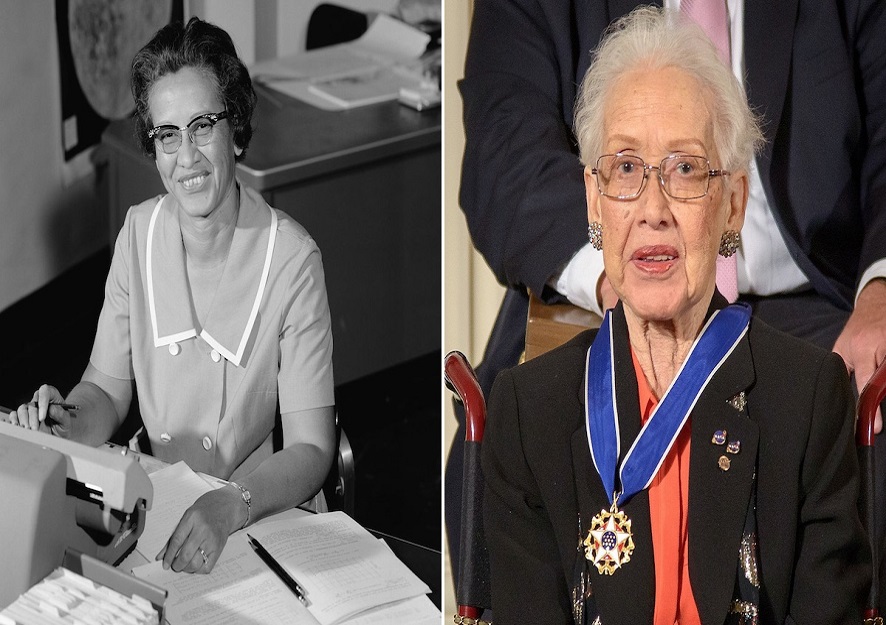The famed NASA mathematician Katherine Johnson, who was instrumental in the launch of the first American into orbit around the Earth, has died at the age of 101.
Johnson is described by NASA as one of its “most influential figures” as it announced her death on Twitter.
“Today, we celebrate her 101 years of life and honor her legacy of excellence that broke down racial and social barriers,” it wrote.
Johnson’s work gained worldwide attention when her life was chronicled in the film Hidden Figures, with actress Taraji P. Henson portraying her likeness.
Hidden Figures released in 2016, tells the story of African American women whose maths skills helped put a US astronaut into orbit in the 1960s.
Born in White Sulphur Springs, West Virginia, her calculations of orbital mechanics were pivotal in formulating emergency return paths for astronauts, the formation of the Space Shuttle Program and completing missions to Mars.
A child prodigy, she entered a specialized high school program on the campus of West Virginia State College at the age of 10. The county she was raised in did not provide an education for black students beyond the eighth grade.
She went on to graduate from high school at 14 and took every math course offered at West Virginia State, a historically black college in her home state. She graduated summa cum laude in 1937 with degrees in French and Mathematics at the age of 18.
Johnson accepted a teaching position at a public school in Marion, Virginia.
In 1939 after marrying her first husband, James Goble and becoming pregnant, Johnson quit the graduate math program at West Virginia University.
At the time, Johnson was the only African-American woman to integrate into the university after the Supreme Court ruling Missouri ex rel. Gaines v. Canada (1938). The ruling stated that black students were to be afforded the same advanced educational opportunities as their white counterparts.
Johnson decided to explore a career in research mathematics. It was a difficult field for African-Americans, let alone African-American women to traverse through, however, after hearing from a family member that the National Advisory Committee for Aeronautics (NACA) was hiring mathematicians she stayed the course.
Johnson was offered a position in 1953. NACA would be superseded in 1958 by the National Aeronautics and Space Administration (NASA).
From 1953 to 1958, Johnson computed complex mathematical formulas manually all the while experiencing racial and gender segregation.
At the time, Johnson recalled that no woman had her name placed on a report she completed, herself and the black women who were mathematicians worked under the supervision of white engineers, the computers they worked on were labeled “colored computers.”
Johnson recalled, “We needed to be assertive as women in those days – assertive and aggressive – and the degree to which we had to be that way depended on where you were. I had to be.
“In the early days of NASA, women were not allowed to put their names on the reports – no woman in my division had had her name on a report.
“I was working with Ted Skopinski and he wanted to leave and go to Houston … but Henry Pearson, our supervisor – he was not a fan of women – kept pushing him to finish the report we were working on.
“Finally, Ted told him, “Katherine should finish the report, she’s done most of the work anyway.” So Ted left Pearson with no choice; I finished the report and my name went on it, and that was the first time a woman in our division had her name on something.”
During her 28-year career, Johnson chartered the trajectory for Alan Shepard, the first American in space.
Johnson also calculated the launch opening for the 1961 mission to Mars, verified the calculations for digital computers before they were used for the first time, her calculations were used in the 1969 Apollo 11 and Apollo 13 moon missions and was enlisted to ensure that Shepard’s Freedom 7 capsule would be recovered quickly after landing.

Throughout her career, Johnson co-authored 26 scientific papers, has been lauded as an African-American woman pioneer in STEM, has been ranked among African-American’s in science and technology and been bestowed with the Presidential Medal of Freedom by former President Barack Obama.
On May 5, 2016, the Katherine G. Johnson Computational was unveiled at the Langley Research in Hampton, Virginia in honor of Johnson.
The center officially opened its doors on September 22, 2017. Johnson was also given a Silver Snoopy Award, usually given to those “who have made outstanding contributions to flight safety and mission success.”
Johnson was honored by the West Virginia State University a day before her birthday with a statue and scholarship dedicated to her. Hundreds of people including 75 of Johnson’s children, grandchildren and great-grandchildren attended the event.
Johnson resides in Hampton, Virginia with her second husband, James A. Johnson.
They had six grandchildren and 11 great-grandchildren. She continues to inspire others by encouraging students and her grandchildren to pursue STEM-related careers.










